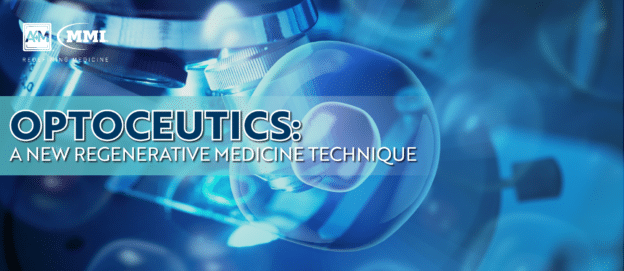“We are talking about a completely new technique that could lead us to important outcomes in tissue engineering,” said one of the lead authors, Maria Rosa Antognazza, an IIT researcher. “The use of light as a stimulus is much more versatile and much less invasive compared to the use of electrodes; it can be directed in a more specific way on different cell populations objects of the treatment. The purpose is to create a new area of investigation, which we call ‘optoceutics,’ able to walk side by side with pharmaceutic and electroceutical technology with huge applications potential.”
Using Light to Influence Tissue Cells
Published in Science Advances, the study reveals the ability to influence tissue cells via a combination of the use of visible light and biocompatible materials. Along with cardiovascular physiologist Francesco Lodola, Antognazza and the research team showed that it is possible to apply the optoceutic method to progenitor cells of the endothelial tissue to influence the fate of these cells – a widely investigated process in the field.
By combining conjugated polymers with the advantages of optical stimulation (over current electromechanical and chemical stimulation approaches), the researchers were able to gain optical control of endothelial colony-forming cell fate. They managed to effectively promote the in vitro angiogenesis process by using photo-active materials as cellular substrates and stimulating them with short pulses of visible light.
Influencing tissue cells using light provides unprecedented spatial and temporal resolution, according to the paper, and permits lower invasiveness and higher selectivity of the technique. The results of this trial and the potential to improve the outcome of autologous cell-based therapy in viva may pave the way for significant developments in the treatment of cardiovascular disease and regenerative medicine as a whole.
Funded by the European Union, the latest study was conducted as part of two projects – LINCE and LION-HEARTED. The LINCE project began with the purpose of creating biotechnology devices able to control cellular metabolism with the use of light and nanotechnology, while the LION-HEARTED project aims to implement optoceutic technology into cardiovascular system regenerative medicine, in particular, by developing novel targeted biotechnological therapies to treat post-ischemic event patients.
While greatly promising as a novel regenerative technique, the field of optoceutics requires much further evaluation and investigation as part of research efforts separate from LINCE and LION-HEARTED. Before any clinical uses can be determined, the strategy will need to be successfully applied to other cell models of interest for tissue regeneration. However, the newly discovered possibility of modulating cell fate via optical stimulation will allow researchers to be highly precise yet minimally invasive and may be suitable for several therapeutic applications within the field of regenerative medicine in the future.




